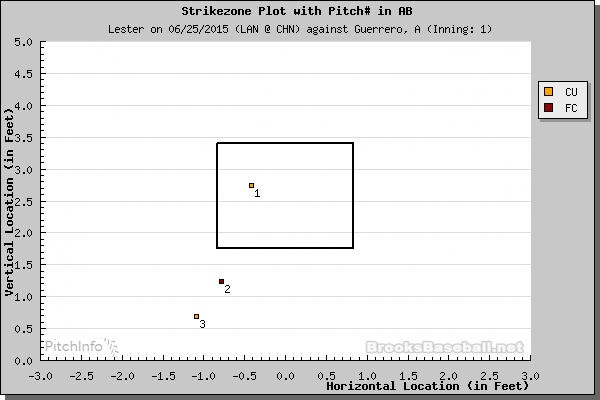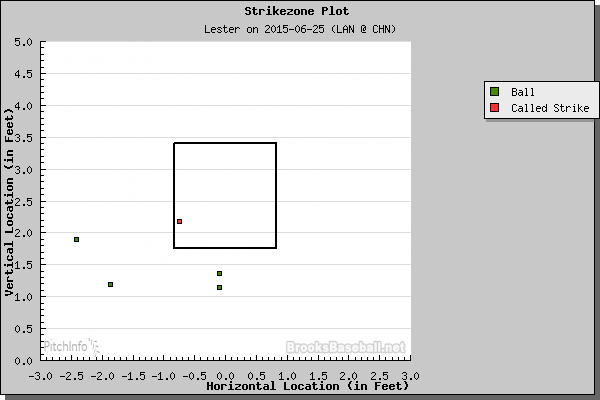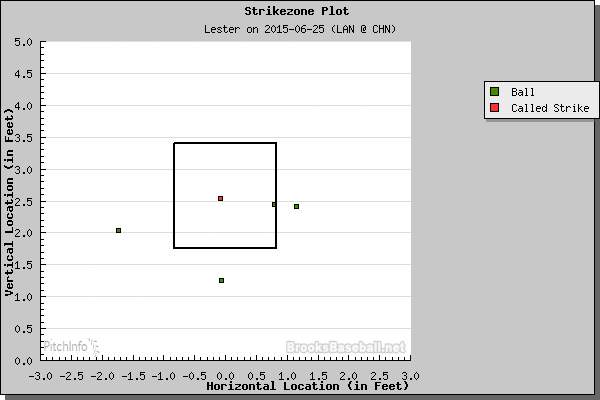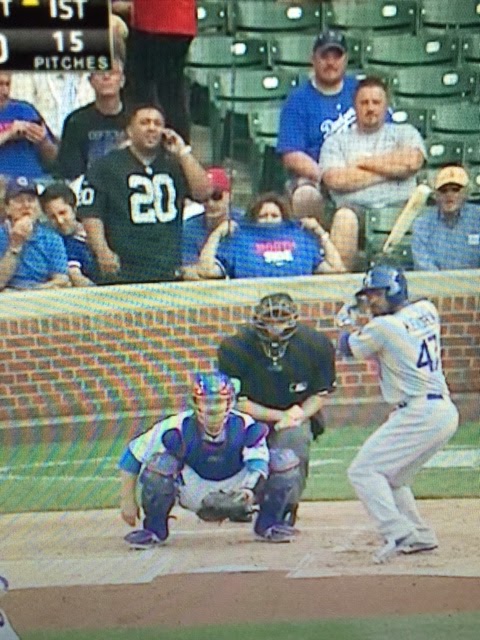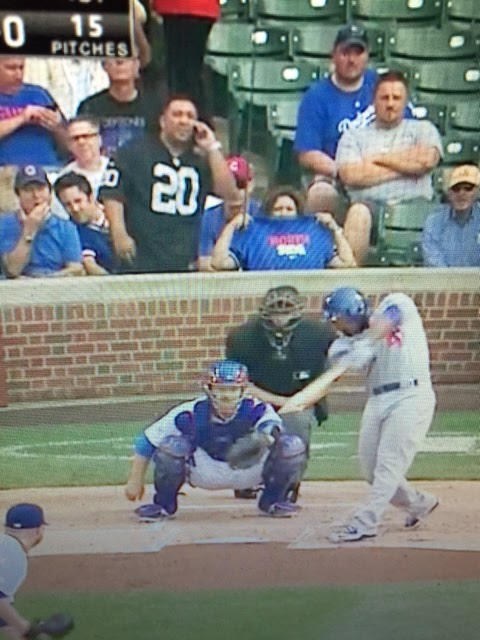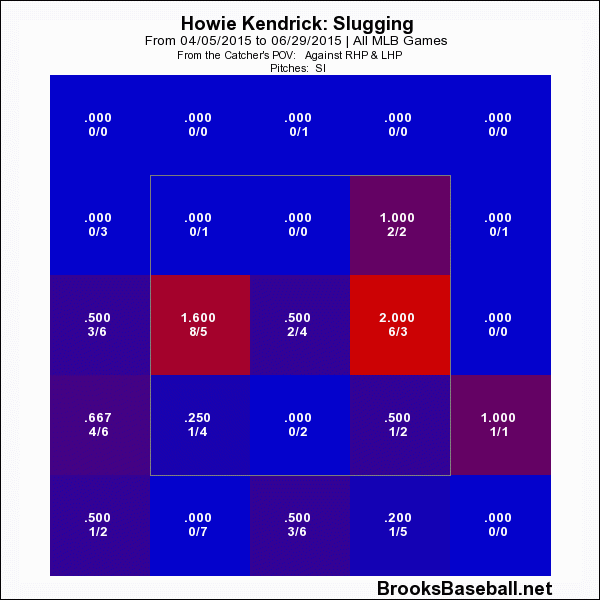Date: June 25
Opponent: Los Angeles Dodgers
Location: Wrigley Field
Introduction
Who likes June, anyways? All that sunshine, ideal weather, and the sheer ecstasy of life’s limitless possibilities. No, thank you! Good riddance, I say, and I am pretty sure Jon Lester is with me.
Over the course a decade-long career filled with sustained regular season excellence and postseason dominance, a half-season is a relatively small sample size. However, as June ends and Lester approaches the halfway mark of his season, it is fair to speculate that he has reached a bit of a crisis point, at least in 2015. Thursday’s start against the Los Angeles Dodgers just might be his nadir.
No matter how you dissect Lester’s start, it was ugly. Following the start, likely his last of June, Lester’s 5.68 DRA now ranks second worst among the 42 NL pitchers with at least 80 innings pitched. In 2015, he has not lasted more than 7.0 IP in any start. By the end of June 2014, he had gone more than seven innings in six starts.
Do you want some abysmal historical context for Lester’s fifteenth start of 2015? Here’s some quick bullet points to highlight how rare Thursday’s start was for him:
- The four-inning outing was Lester’s shortest start since July 22, 2012 at Fenway Park against the Toronto Blue Jays.
- The 75 pitches he threw marked his fewest in a start since September 24, 2011 at the New York Yankees.
- The loss matched a career-long streak of seven starts without recording a victory, set in July and August of 2012.
If you are noticing the multiple references to September 2011 and 2012, that is not a coincidence. From September 11, 2011 through the end of 2012, a span of 37 starts, Lester posted a 5.12 ERA and 1.43 WHIP. As you know, he would rebound from that brutal stretch. However, Lester’s four-seam fastball was a disaster during those 37 starts, like it has become in 2015, but you will have to continue to the Trends section to see how his 2011-2012 four-seam ineffectiveness is tied to 2015.
Thursday’s start, though, was everything disappointing about Lester’s 2015 in four brief innings.
After getting ahead of a combined 75 percent of batters (36 of 48) against Cincinnati and Minnesota, Lester was back below 60 percent (11 of 19, or 58 percent). His 58.7 percent strike rate (44 of 75), was his lowest percentage of the season. During an 11-pitch stretch in the first inning, he threw nine balls to load the bases with one out (see Key At-Bat/Sequence Section). When he did come over the strike zone with fastballs, Howie Kendrick and Enrique Hernandez made him pay.
He labored to get through the first two innings, with all eight base runners coming in the game’s opening frames. In 2015, Lester has allowed 19 of 40 earned runs in the first two innings.
Entering Thursday, the Dodgers had averaged less than three runs per game since June 4. Despite the recent difficulties scoring runs, the team still led the NL in several offensive categories, including OPS, ISO, and walk rate. The team, however, has struggled against left-handed pitcher, hitting just .244/.315/.375. That mattered little on Thursday, though.
In 2015, Lester is, to paraphrase Jimmy James from News Radio, a “cipher, a cipher wrapped in an enigma, smothered in secret sauce.” As his start against the Dodgers demonstrated, we just do not know which Lester is taking the mound from one start to the next. On Thursday, it was the one who cannot locate his fastball consistently, possesses a four-seamer that’s becoming damn near a liability (see Trends section), abandons his curve, and cannot curtail the big inning. For those Wrigleyville masochists out there, keep reading below to learn how it went down.
Traditional Line
4.0 IP, 4 H, 5K, 4 BB, 4 ER
Pitch Breakdown
75 pitches (44 strikes)
| Total | Velocity (Max) | AVG | SLG | BABIP | |
| Four-Seam | 29 | 91.7 (93.5) | .333 | .667 | .400 |
| Cutter | 17 | 88.8 (90.4) | .500 | .500 | 1.000 |
| Sinker | 13 | 91.5 (93.0) | .250 | .500 | .333 |
| Change-Up | 12 | 83.8 (84.4) | .000 | .000 | .000 |
| Curveball | 3 | 74.8 (76.8) | .000 | .000 | .000 |
The 91.7 mph average velocity with the four-seam fastball represents Lester’s lowest velocity in a start in 2015. With each passing month, the four-seamer has become a bigger issue (see Trends section, if you have the stomach). On the day, Dodgers batters had no trouble with any of Lester’s fastballs, finishing 4-for-12 with four walks, a double, and a triple.
Statistically, entering Thursday, the sinker has been Lester’s best fastball in 2015 (.268/.286/.293), despite him throwing it just 11 percent of pitches. Against the Dodgers, Lester and Ross seemed to acknowledge that fact, as they went to it 17.3 percent of pitches, his highest frequency since May, and reduced his four-seamer and cutter usage. Unfortunately, it did not produce the desired results. Lester induced zero whiffs on four swings, and Howie Kendrick’s two-run first-inning double came on a sinker that did not sink (see Key At-Bat/Sequence section).
Lester went to his curveball right at his season average (16.0 percent). Despite throwing just five strikes, Lester generated two strikeouts and three whiffs with the curve, including one of his better sequences of the day.
In the first inning, with one out, runners on second and third, and two runs already in for the Dodgers, Alex Guerrero came to the plate with a chance to break open the game.
Lester induced a whiff on a 74 mph curveball up in the zone for strike one, and then got him to chase a 90 mph cutter just above his ankles for strike two. With the count 0-2, Lester unleashed a 58-foot curve that Guerrero chased for strike three:
It was one of the day’s few positive sequences for Lester and Ross. Sadly, it would be the extent of the duo using the fastball to set-up the curve.
Trends
This week’s Trends section is simple and to the point: This season, as Lester’s four-seam usage has increased by month, his success with the pitch has decreased.
In April, as Lester struggled with his cut fastball (.469/.469/.719, 27.9 percent of pitches) and sinker (.400/.400/.400, 13.3 percent of pitches), his four-seam fastball was his saving grace. As the season has progressed, though, the pitch’s effectiveness has regressed:
| Frequency | K% | AVG | OBP | SLP | BABIP | |
| April | 39.84% | 32.4% | .226 | .294 | .355 | .350 |
| May | 41.47% | 26.2% | .276 | .312 | .517 | .316 |
| June* | 44.14% | 18.2% | .324 | .422 | .595 | .370 |
*Excludes start 6/14 against Cincinnati, for which pitch data is unavailable
Lester’s four-seam struggles could be due partly to the .341 BABIP against the pitch in 2015, which is 35 points above his career average.
However, against the Dodgers, Lester generated just one whiff with his four-seamer, his lowest total of the season. That has nothing to do with BABIP. Few batters have difficulty catching up to 91.7 mph four-seamer when it is left over the plate.
In the Introduction section we mentioned Lester’s four-seamer struggles during his brutal 37-start stretch in 2011 and 2012. During that stretch, he was throwing his four-seam fastball just 36 percent of the time, as against the pitch opposing batters hit .312/.404/.598 with 18 home runs. With his four-seamer, his strikeout rate (15.0 percent) and walk rate (13.4 percent) were nearly identical).
Starting in 2013, though, and carrying through the 2014 season, his four-seamer returned to prior effectiveness, as he threw it 43.5 percent of the time, and held opposing batters to .241/.317/.368. His strikeout rate was (18.2 percent) was nearly double his walk rate (10.0 percent). The point is, Lester has struggled through much longer, prolonged stretches without his best four-seamer, and he came back strong with the pitch.
It is not just that Lester’s throwing more four-seamers with diminished production, but that it results in him throwing fewer curveballs and sinkers, his two most effective pitches in 2015. As we have chronicled extensively this season, when Lester is struggling, he falls back on his four-seam fastball with greater frequency, no matter its effectiveness.
Again, it’s simple: When Lester has hit his spots with his four-seamer, he has been able to mix in his cutter and curve. When not, he falls behind batters or gets hit hard in the strike zone.
Key At-Bat/Sequence
Inning: First Inning
Score: 0-0
Situation: Jimmy Rollins on first base
Batter(s): Justin Turner, Scott Van Slyke, Howie Kendrick
Lester began the day on a great note, getting ahead of Enrique Hernandez 0-2 with two four-seam fastballs, before picking up the strikeout on an outstanding curveball in the dirt.
After a well-placed bunt single by Rollins, Lester threw balls on nine of 11 pitches, all fastballs. It was not poor pitch selection, as both Turner and Van Slyke have struggled against fastballs from left-handed pitchers in 2015:
| AVG | OBP | SLP | |
| Turner | .235 | .316 | .235 |
| Van Slyke | .177 | .300 | .177 |
Unfortunately, in the span of 10 pitches to the two batters, Lester was not able to induce a swing from Turner:
Or Van Slyke:
Despite Lester’s struggles locating his fastball, he and Ross continued to go with fastballs.
With the bases loaded and one out, Kendrick took a 91 mph sinker down and in for ball one. On 1-0, Ross moved outside, setting up down and away:
Lester, however, stayed up with a 93 mph sinker:
Kendrick ripped the pitch down the right-field line to knock in the game’s first two runs. It seemed like an odd pitch selection, considering Kendrick entered the game batting .379/.419/.517 against sinkers in 2015. And when pitchers have left sinkers in the middle of the plate, Kendrick has made them pay:
It was a tale as old as 2015 itself: Ross sets up for a fastball low and away, and Lester misses the spot over the middle of the plate. And after finding initial success with his curve, set-up by the fastball, he abandoned it at the first sign of trouble.
Keep-In-Mind
You want a positive, huh? Hmmm. Oh, I got it: After allowing eight home runs over six starts, Lester has allowed just one home run in his past four starts. That’s good, right?
Okay, so you want a positive without the sarcasm? Compare Lester’s numbers through the end of June 2013 to his numbers through the end of June 2015:
| Avg. Start | ERA | WHIP | OPS | HR Allowed | BABIP | K% | BB% | |
| 2013 | 6.31 IP | 4.61 | 1.351 | .743 | 13 | .297 | 19.2% | 8.5% |
| 2015 | 5.96 IP | 4.03 | 1.366 | .762 | 10 | .329 | 22.5% | 7.1% |
In 2013, Lester’s four-seamer was a strength through the season’s first three months (.220/.322/.327, 42.4 percent of pitches), while he struggled with cutter (.294/.336/.500, 25.6 percent) and curve (.310/.356/.429, 13.3 percent). The 2013 World Series ended with Lester being mentioned among the handful of best pitchers in baseball, and one of the great postseason pitchers of all-time.
So, what improved? Lester’s remained stingy with four-seamer (.247/.318/.363). However, the high BABIP against his cutter and curve, .377 and .375, respectively, came down to earth in July-September to .300 and .250, respectively. In 2015, as we mentioned in the Trends section, Lester’s .341 BABIP against his four-seamer could mean he is in line for an improvement come the second half.
Conclusion
Thursday’s start was the type for which the Cubs invested so heavily in Lester: A home game against a division leader, the day after a loss, with a chance to win the series before visiting the best team in baseball. Alas, it was not to be this time around.
We will save grand summations until we reach the season’s halfway mark in about a week. For now, we can just say that Lester’s exceptional May has been sandwiched between a disappointing April and June:
| Avg. Start | ERA | WHIP | OPS | BABIP | K% | BB% | % of Batters Ahead | |
| April | 5.42 IP | 6.23 | 1.569 | .810 | .424 | 25.0% | 5.2% | 51.6% |
| May | 6.83 IP | 1.76 | 1.171 | .667 | .263 | 21.5% | 7.0% | 66.3% |
| June | 5.33 IP | 5.74 | 1.500 | .851 | .355 | 21.9% | 8.8% | 64.9% |
By the best measurements, Lester is a slightly below-average pitcher (95 ERA+ and 3.57 FIP). By others, he has been among the worst pitchers in the NL (5.68 DRA). Obviously, it is not what the Cubs envisioned, but history indicates Lester can, and has, rebounded from a dismal half-seasons.
Season to Date
4-6, 4.03 ERA (5.68 DRA), 1.366 WHIP, 22.5 K% , 7.1 BB%
Next Start
Wednesday, July 1st at New York Mets (Bartolo Colon)
Lead photo courtesy of David Banks-USA TODAY Sports

